
Best gravel bike shoes and cyclocross shoes ridden and rated
Gravel & Cyclocross disciplines ask a lot from your shoes. So, we have tested the best shoes for durability and performance both on and off the bike
Cross-country and off-road terrains place greater demands on your cycling shoes, requiring them to be both comfortable and robust, which is where the best gravel bike shoes come in. Of course, you might get away with some of the best road cycling shoes or even the best commuter cycling shoes if you're on a bikepacking trip—but purpose-built gravel cycling shoes will ultimately serve you best.
With time almost certainly spent running or walking with your bike, until recently, most gravel bike and cyclocross bike (CX) riders have just had to pick their way through a range of mountain bike shoes. With an upward surge in drop-bar off-road riding, more kit designed specifically to the needs of the gravel bike rider (including gravel bike clothing) are gradually becoming available.
The best gravel bike shoes and cyclocross shoes will almost definitely feature built-up areas along the sole, constructed with softer, grippier rubber that can handle thick mud and rugged terrain. They will also likely use mountain bike-style SPD cleat systems recessed into the shoe for better mud clearing and ease of use. Many also offer the ability to add spikes/studs or greater protection from the elements.
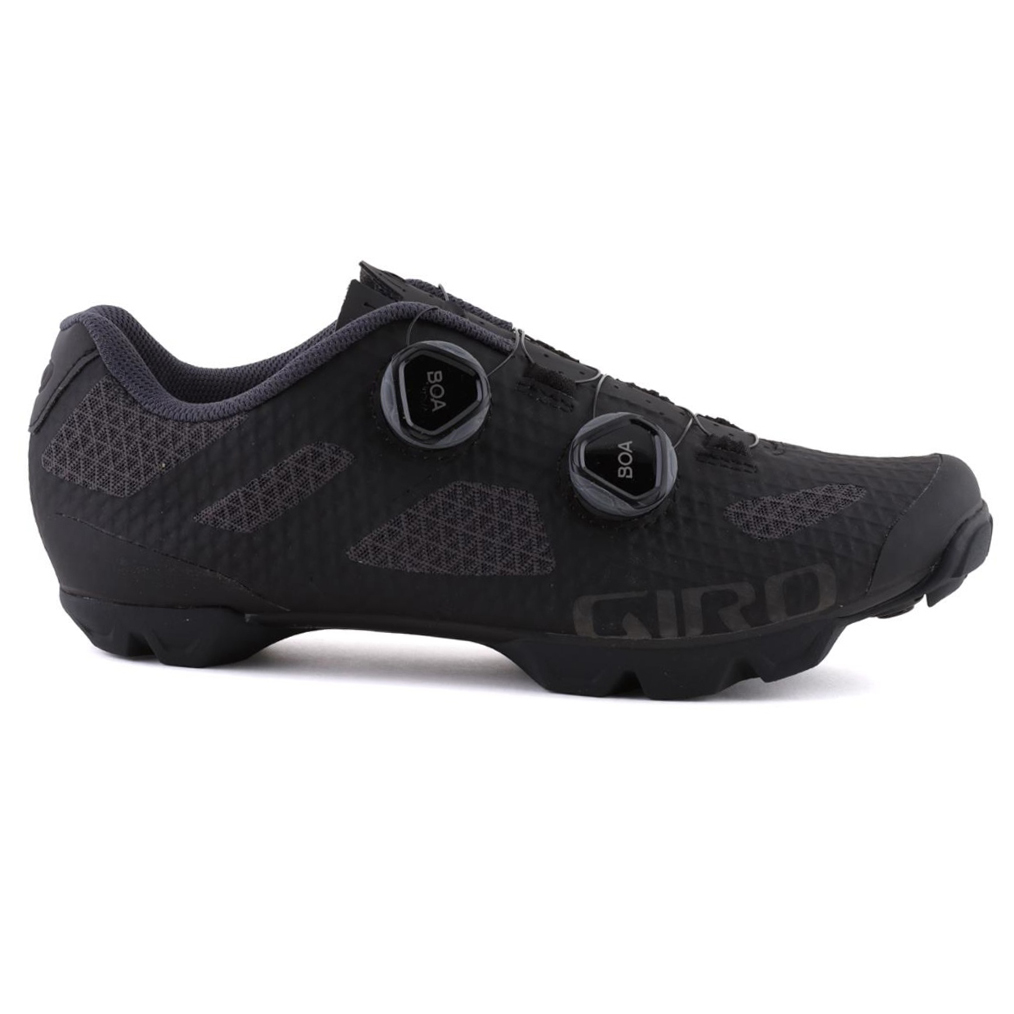
We liked the Sectors' weight, breathability, and comfort. Two Boa dials allow for a precise fit, and the price is very reasonable for the performance on offer.
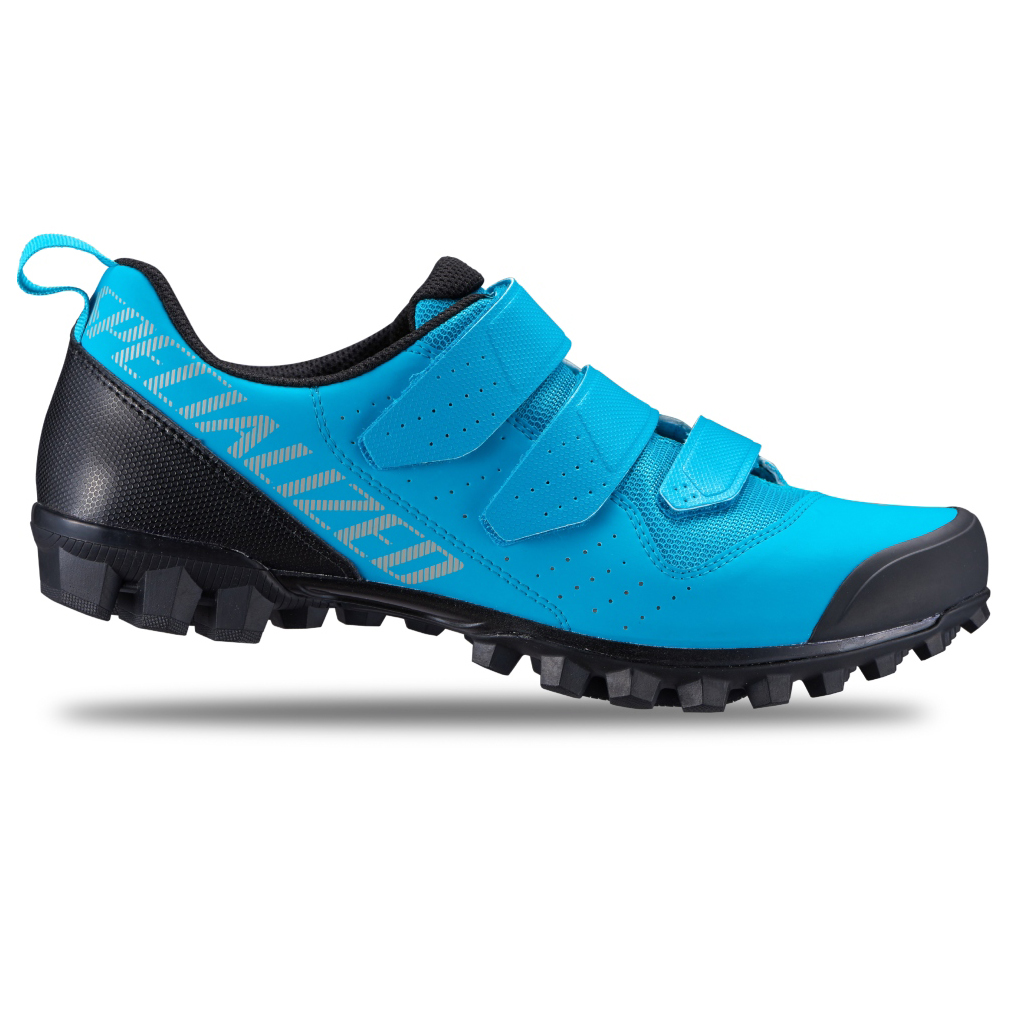
The Recon 1.0 might lack some ventilation, but that is rarely an issue in the UK, and the toe-flex system means that walking comfort doesn't compromise riding stiffness.

The wide-toe box and L6 Boa dial on the Fizik Terra Atlas make for a comfortable and roomy shoe that is versatile enough for gravel or cyclocross.

Lake offers many of its shoes in width fittings, including the MX 238 Supercross, so finding exactly the right size should be a doddle.
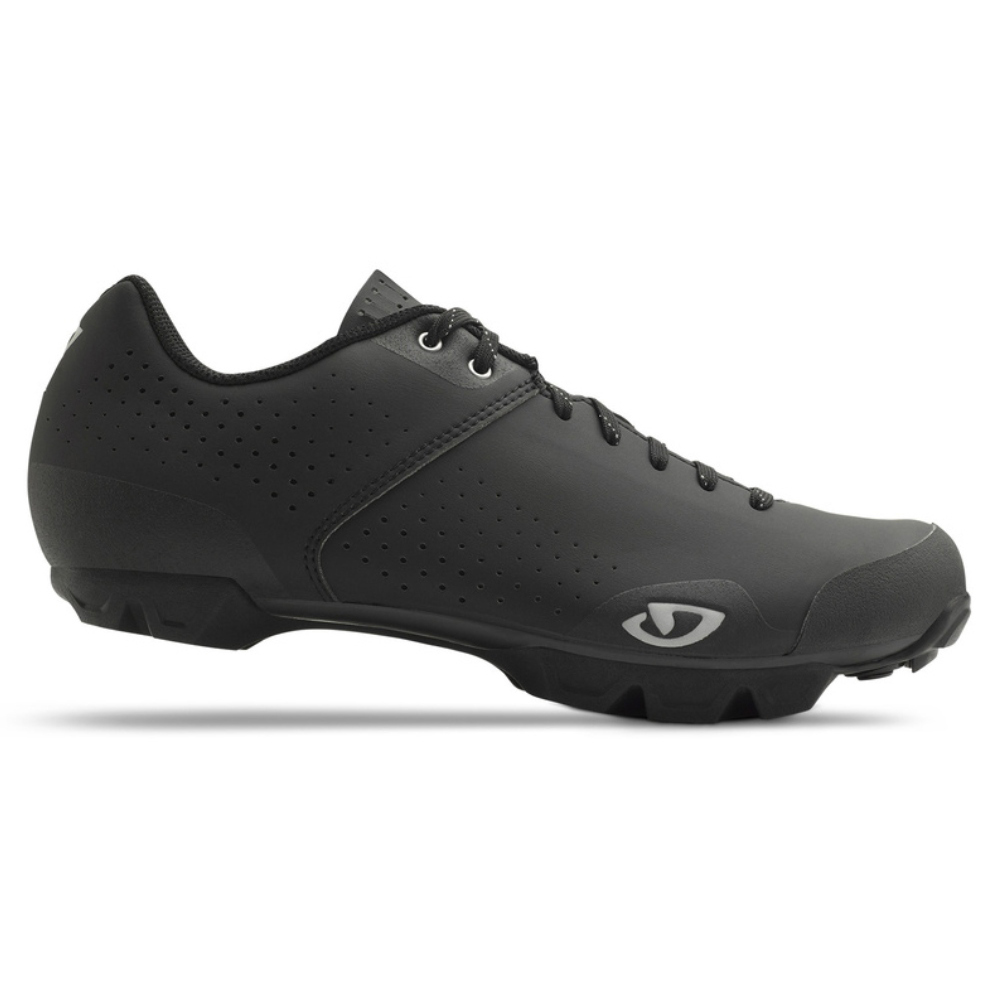
Giro's mid-range Privateer offers decent power transfer and walking flexibility, with plenty of grip. The lace closure keeps the weight down and adds some retro style.
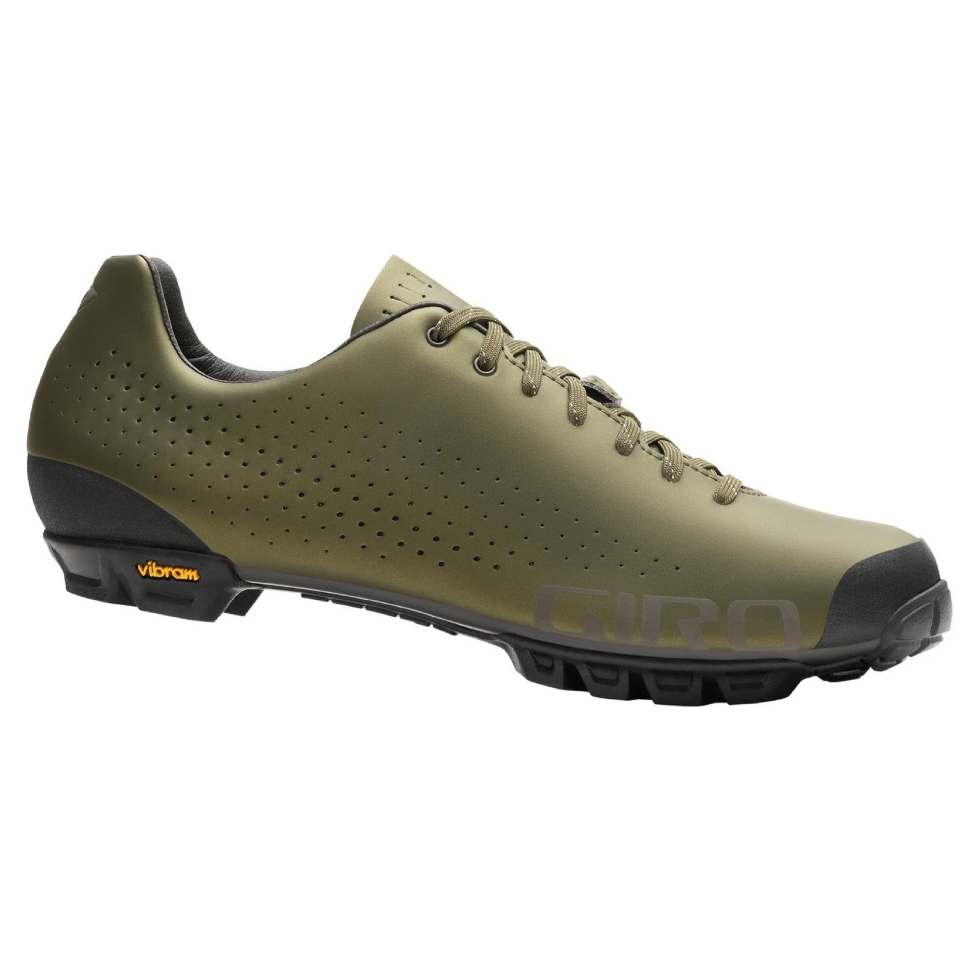
The VR90 ticks many performance boxes—a Vibram tread mated to a carbon sole unit provides grip and stiffness aplenty, and toe spikes are included for extreme conditions.
Load the next 3 models
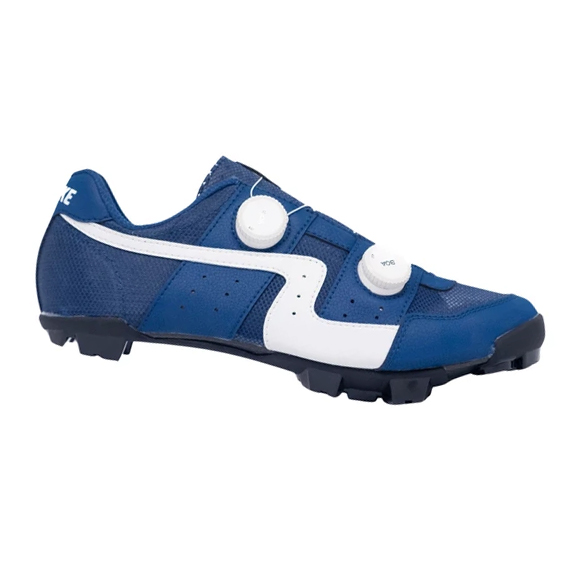
The MX30G's are stiff yet incredibly comfortable. Lake is rapidly becoming a market leader in cycling shoes, and the MX30G's are again another stellar option.

The Fizik Tempo Beat does not claim improved performance or watt-saving. Its luxurious comfort and relaxed nature make it perfect for casual encounters with friends on cafe rides.

Fizik's Powerstrap design is incredibly comfortable, infinitely adjustable and offers excellent security, even if a bit primitive in the age of Boa dials.
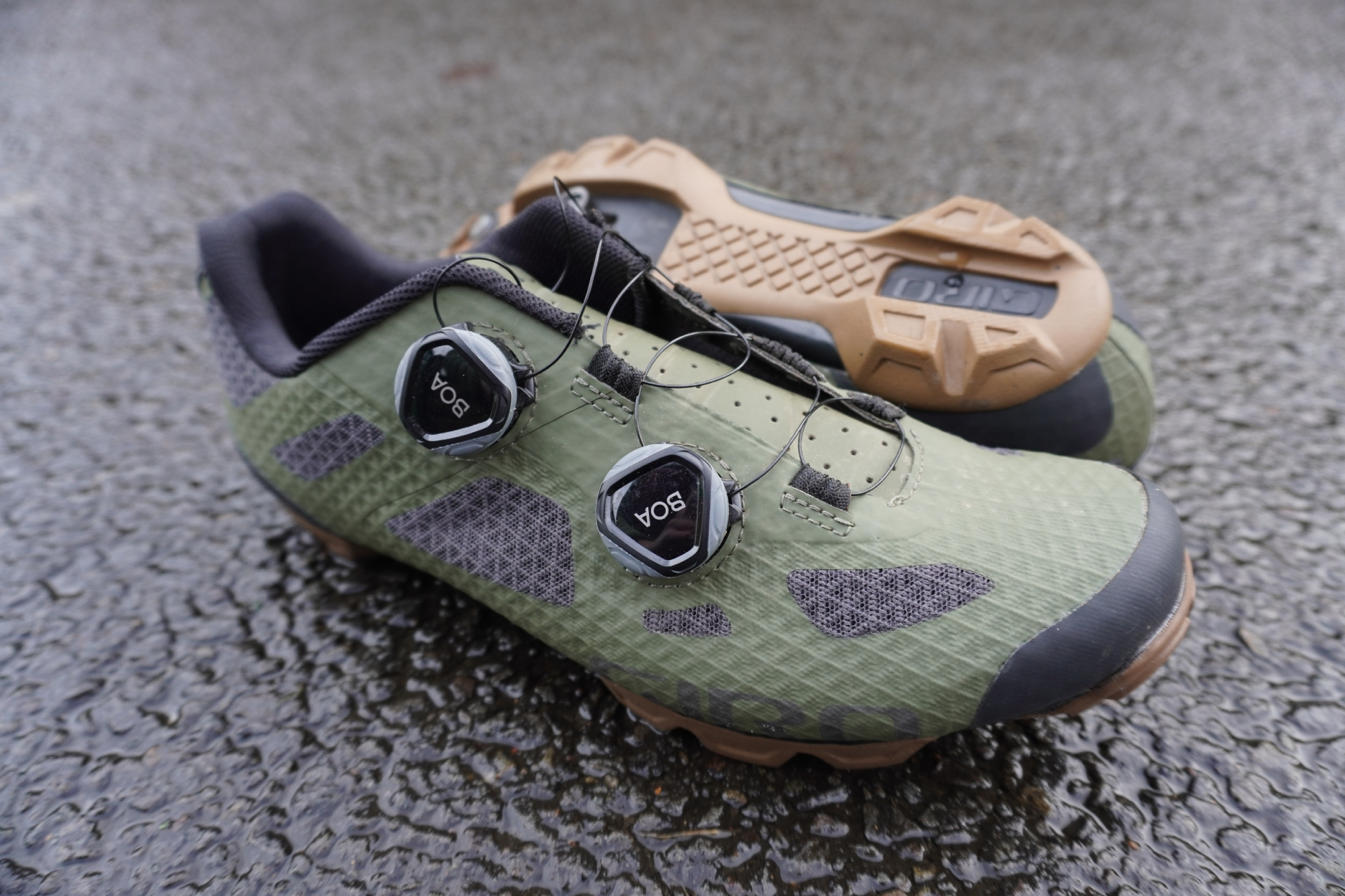
Giro Sectors
Our expert review:
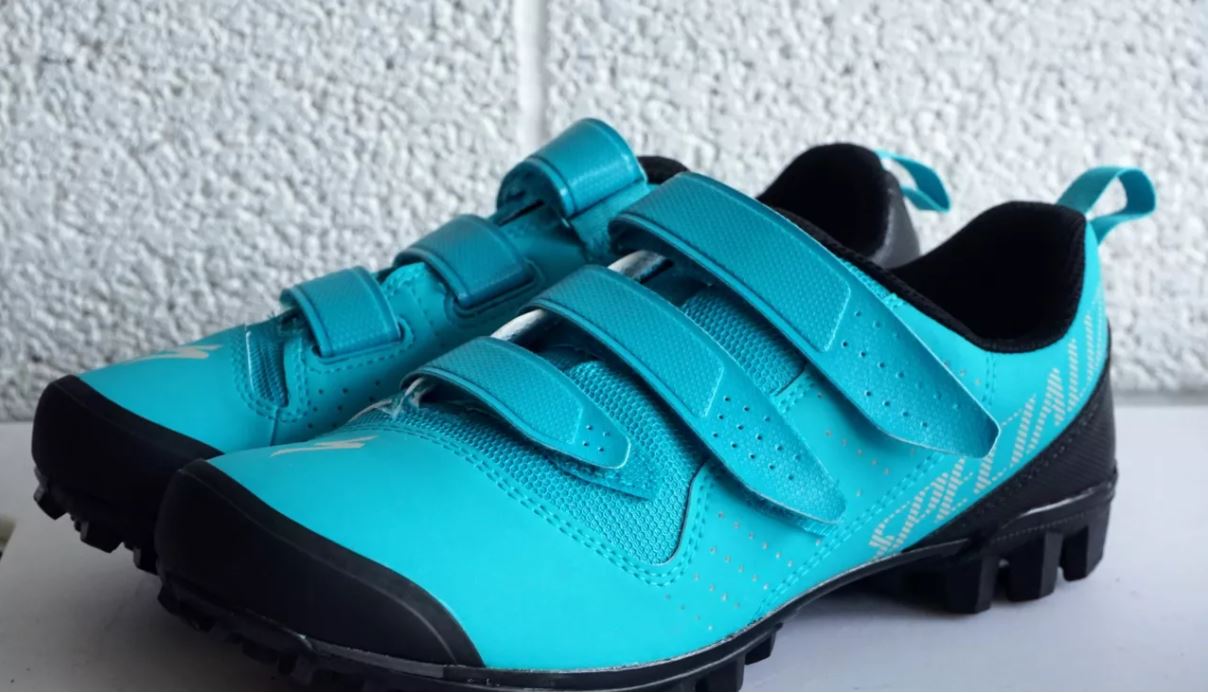
Specialized Recon 1.0
Our expert review:
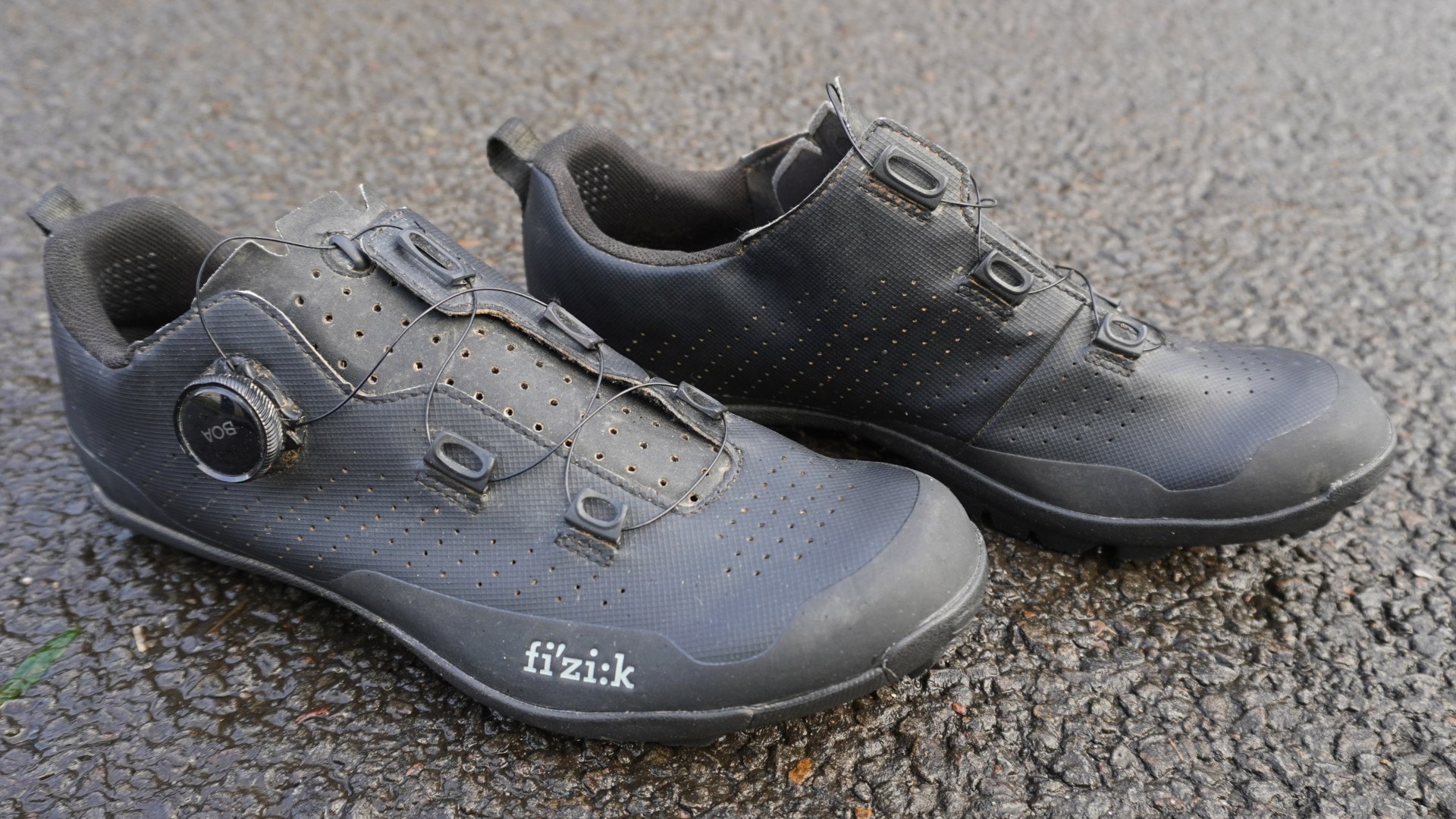
Fizik Terra Atlas
Our expert review:

Lake MX 238 Supercross
Our expert review:
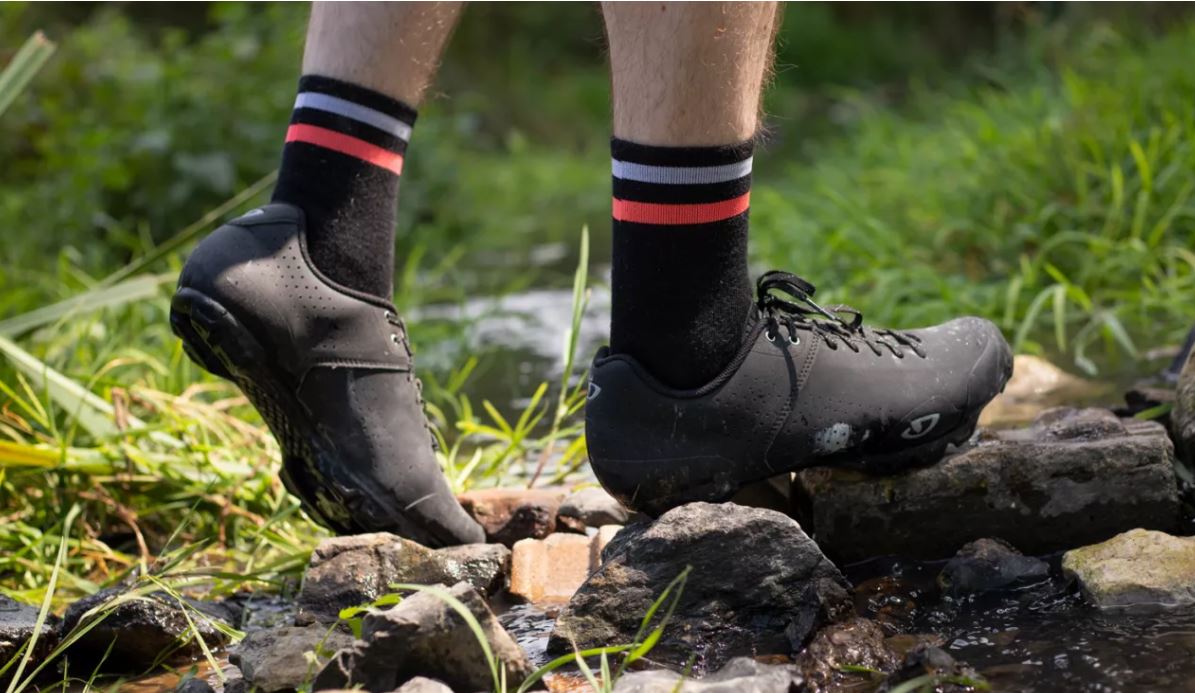
Giro Privateer
Our expert review:
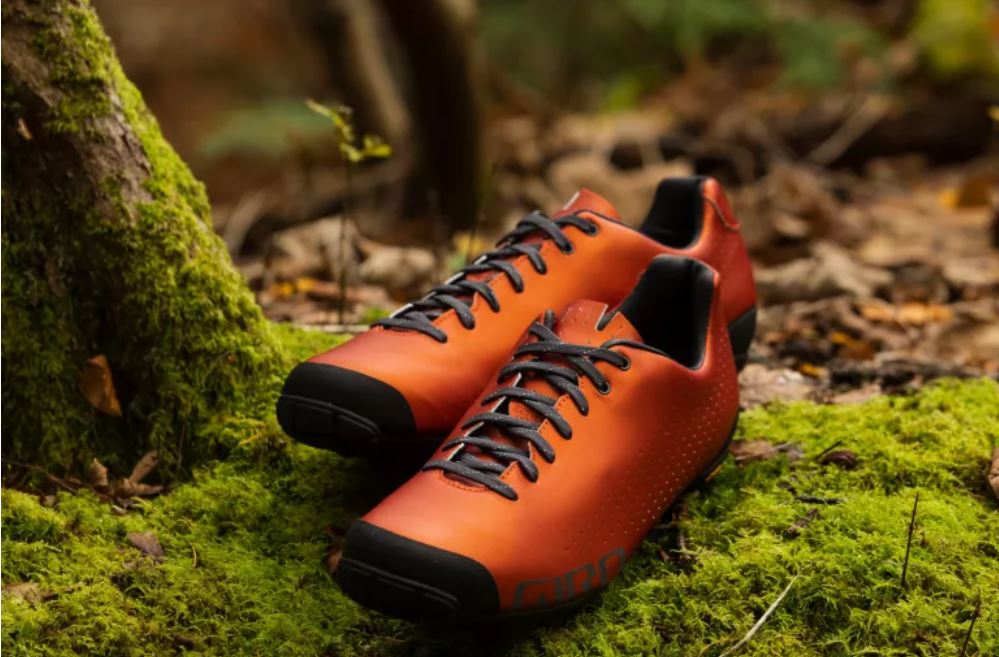
Giro Empire VR90
Our expert review:
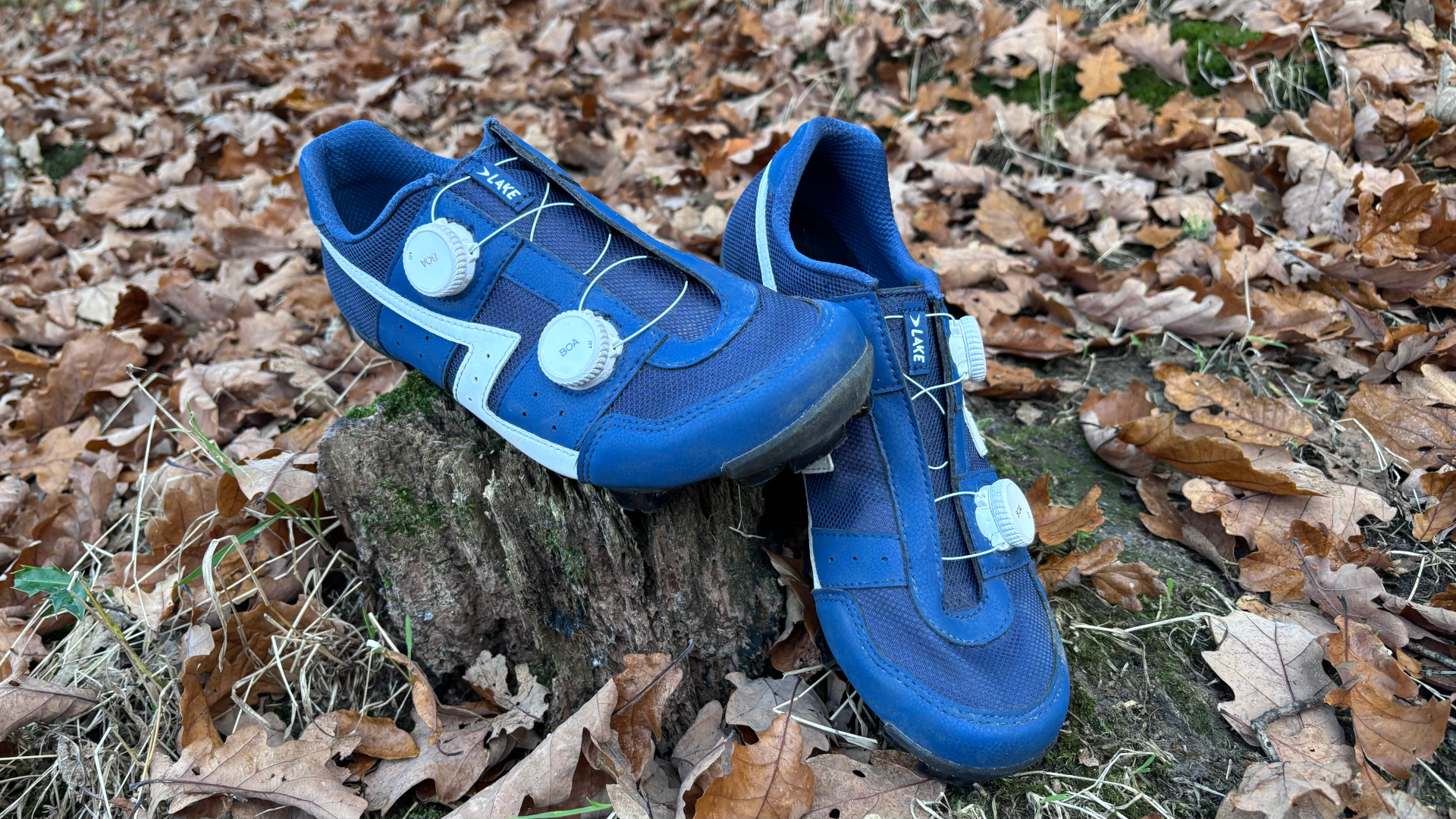
Our expert review:
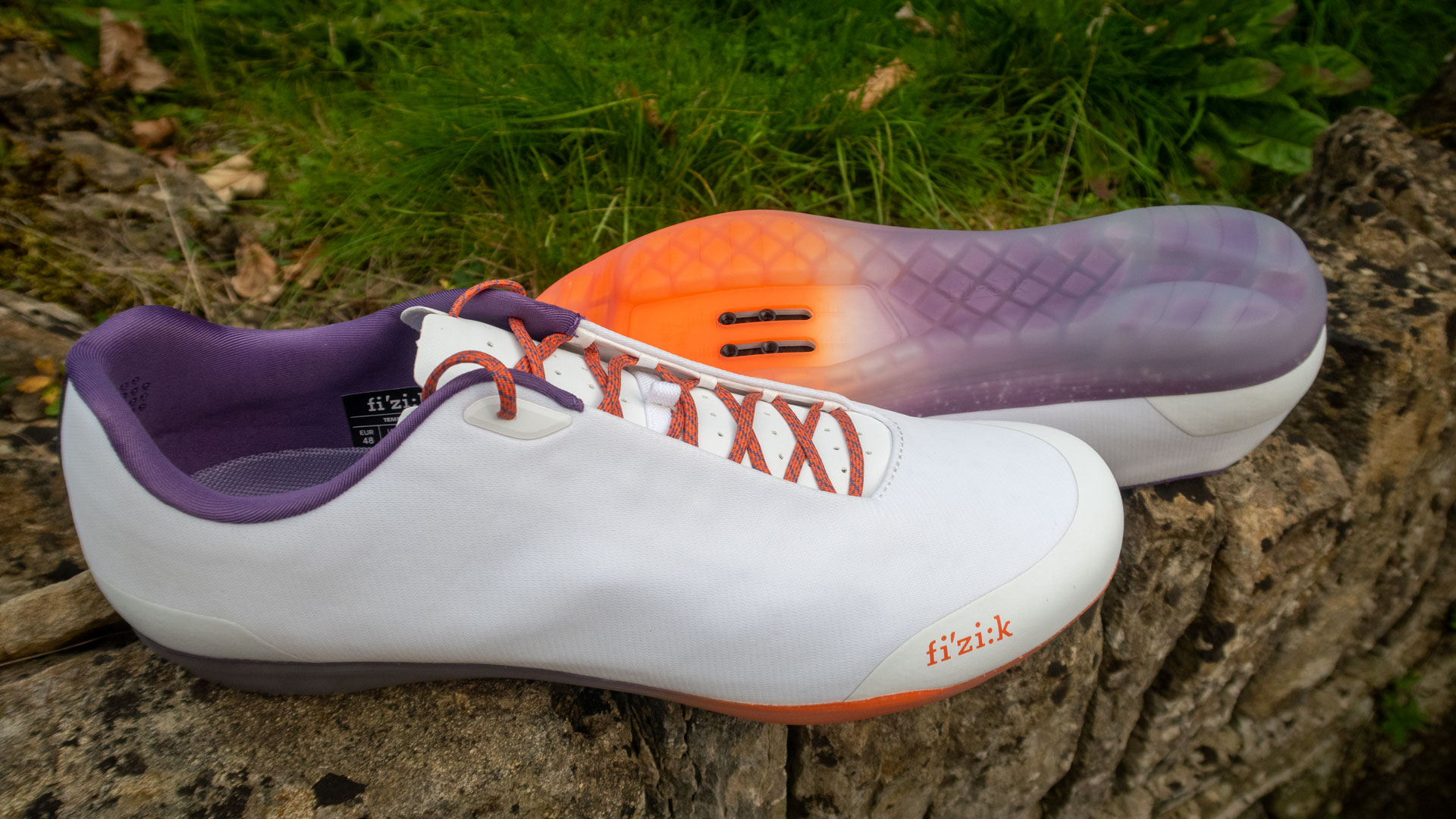
A relaxed and comfortable shoe ideal for bikepacking or commuting
Our expert review:
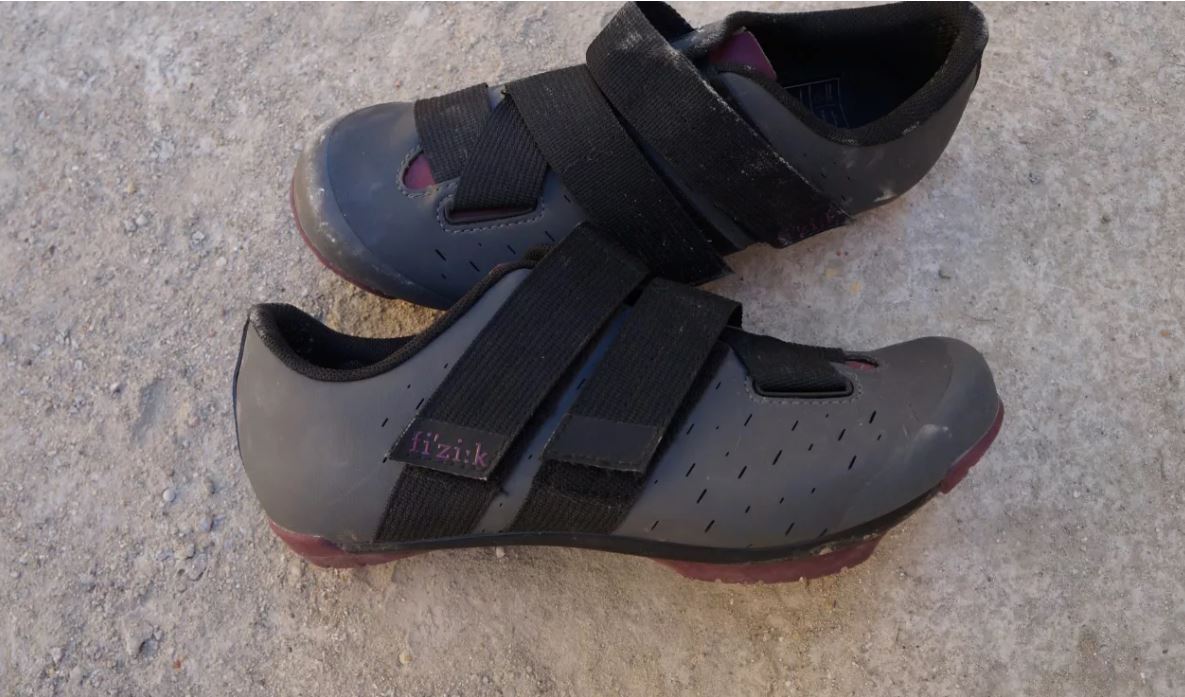
Fizik Terra Powerstrap X4
Our expert review:
In an ideal world, we'd have a different pair of shoes for every discipline of cycling and variety of riding and weather conditions. In reality, we probably have to stick to thinking about what an average ride looks like for us.
While a pair of road shoes can be beefed up in cold and wet conditions with the addition of pulling on a waterproof or neoprene overshoe, this isn't quite as practical off-road. Although there are options out there, from experience they don't survive longer than a single season, maximum.
If cold and wet weather is a constant with your gravel riding, then you might want to look for waterproof features or winter cycling boots, or if you suffer from cold feet go up a size to ensure a thermal sock and insole will fit.
With cyclocross racing being a winter sport in Europe, bad weather is almost a given, but as the duration of time and pace spent riding is shorter and higher, cross shoes are purely performance-focused. As with XC-specific shoes, as well as not being designed for spending much time off the bike, like any performance shoe, they will offer foot ventilation, so don't just assume that because it's got grip it's going to be suited to bad weather.
There are a number of different shoes and insoles on the market, such as the Bont Vaypor G and the Lake MX range that can be customised through heat moulding to fit the shape of your feet. This means that the shoes should perfectly support the arch of your foot, giving an almost bespoke fit. This is a major plus point if you do have an above-average foot support requirement. Heat mouldable shoes can provide enhanced comfort to all foot shapes, as well as help with power transfer from a performance aspect.
The short answer is probably No! For some time now both Gravel and Cyclocross riders have managed just fine using Cross-Country Mountain Bike shoes. So, whats changed?
The most noticeable changes are in the stiffness and flexibility of Gravel or CX shoes vs their racier XC counterparts. While XC shoes are durable and can withstand the rigours of mountain biking like Road shoes they are designed for performance. The capable nature of MTBs means riders very rarely need to dismount their bikes, making power transfer and efficiency far higher up the specification requirements.
Modern MTB trail centres and XC courses also feature more 'purpose-built' trails, with drainage and durable surfaces. This means there is less need for high levels of mud clearance and additional protection from the elements.
There are basically four different systems used to tighten cycling shoes: Velcro, ratchets, laces, and dials.
Many shoes at the lower end of the price range will use Velcro straps for fastening, as it's a cheaper production method. While this is great to get you started, you will find that the longevity of the shoe can be shortened due to the mechanics of the hook and eye system getting clogged with mud and then failing to function. That said, it is a lightweight option, so even some of the top-end shoes will use the odd Velcro strap, generally at the less adjusted toe box area. Just be aware that all Velcro straps will require an element of housekeeping to ensure they remain fully functioning, especially after very wet and muddy rides.
The next step up in the fastening system food chain comes in the form of laces. Laces are great at providing lots of fit adjustability and help keep the shoe weight down, but are close to impossible to adjust on the move, and trying to un-tie wet and muddy laces post-ride with cold, wet hands will soon become one of your most hated things. You'll also find laces on some expensive gravel bike shoes like those from Rapha and Giro, as the lace closure complements a lightweight shoe construction and can distribute pressure well.
Ratchets, on the other hand, offer a good level of adjustability, security and are reasonably resistant to mud, although there can be the odd panic moment when they become clogged and fail to open, meaning a contortionist style cleaning requirement whilst still wearing them. They are super easy to adjust on the bike, although this also makes them more vulnerable in crashes and they're fairly easy to loosen by accident when you brush against trailside obstacles. Ratchet systems can be heavy, and after the sole, will be one of the factors in accounting for the weight of the shoe.
At the top end of the cycling shoe closure systems are dials. The cable and mini-barrel winch system provides very secure retention, easy micro-adjustment for a precise fit, a profile that minimises the risk of damage in a crash and all at an impressively low weight. Dials are hard to beat, however, in the famous words of Mr Keith Bontrager "strong, light, cheap - pick two". Owing to the more complex construction methods to enable dials to be used, shoes tend to be on the more expensive side.
As with the fastening systems, there are various different materials and methods used for sole construction for cycling shoes, and the choice will largely come down to style of riding and price.
While one of the biggest choice factors in road shoes will be out-and-out stiffness, off-road shoe choice is a more 'horses for courses' approach - much like bike tyres.
Like tyres, depth and pattern of the sole ideally need to match the sort of riding/hiking/running terrain. The chunkier tread will perform best in wet mud and slippery conditions, while a thinly spaced out tread pattern is better on rocky land, and saves you from having to get a friend to act as your farrier to remove wedged chunks of stone from the sole of your shoe.
Don't be too hasty to write sole stiffness off for the mud market; many of the top-end performance cyclocross shoes will err more towards pedal power than mud or sand running prowess. If you want a more run-friendly balance, opting for a stiff midsole with a slight flex in the toe box would be a good compromise, as would the ability to swap out studs for spikes for when the course gets very muddy.
Stiffer soles are also a good option if you intend to ride more rocky routes, as, a bit like walking boots, you'll want support from the sole when off the bike and walking over uneven terrain.
At the more casual riding and touring end of the spectrum, the focus will be more on comfort on and off the bike. The shoes will still prove stiff enough for efficient pedalling, but allow sufficient flex for walking the trails as well as riding them.
Entry-level cycling shoes will generally come with nylon plastic soles, but if you pay a bit more you will get shoes with carbon composite soles (i.e. a mixture of carbon and plastic), which will help to bring the weight down a little.
For those seeking performance-specific options, then carbon-soled shoes will be the ones to look out for, as these will be stiff and light, but with that comes a risk of discomfort over longer periods on the bike and of course, the wincing as you scrabble about on anything rock or gravel like when off the bike and the underside of your shoe gets scratched and gouged.
If your gravel riding potentially contains an element of hike-a-bike, you may find that a softer compound rubber sole might be more up your (dirt) street for overall grip and durability.
All off-road clipless pedals come with cleats that use a two-bolt mounting system. There are plenty of different brands that offer pedals but on the whole, many use a Shimano SPD style cleat. Some other brands such as Time and Crankbrothers use a slightly different cleat but still with a two-bolt mount. The correct cleats should be provided with the pedals when you buy them.
What two-bolt pedal system you run shouldn't impact which shoes you choose, but you do need to ensure that the shoe offers enough adjustment that you can get the cleat in the right position for you.
Most shoes will offer an element of fore and aft adjustment, and your cleat should allow for side to side, but if you like to ride with a less common angle or position, double check the adjustability is there and that the tread pattern doesn't interfere.